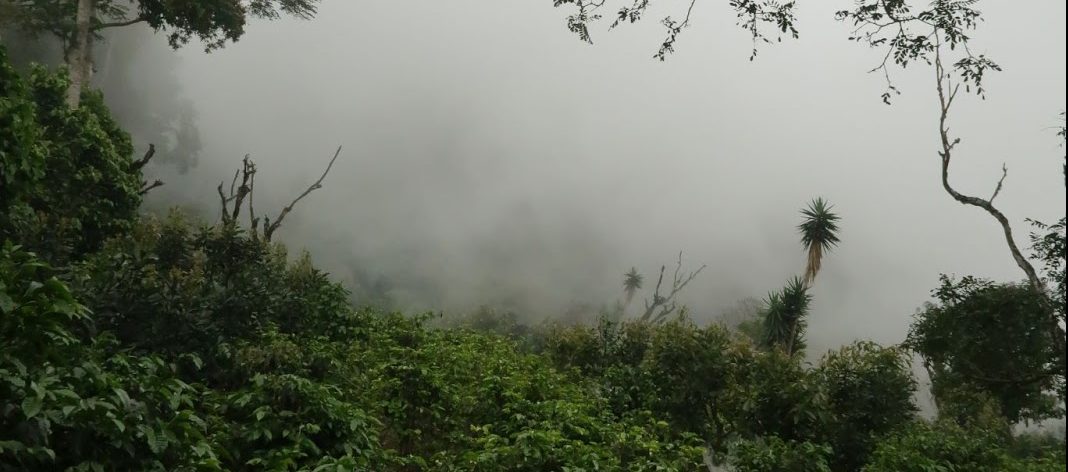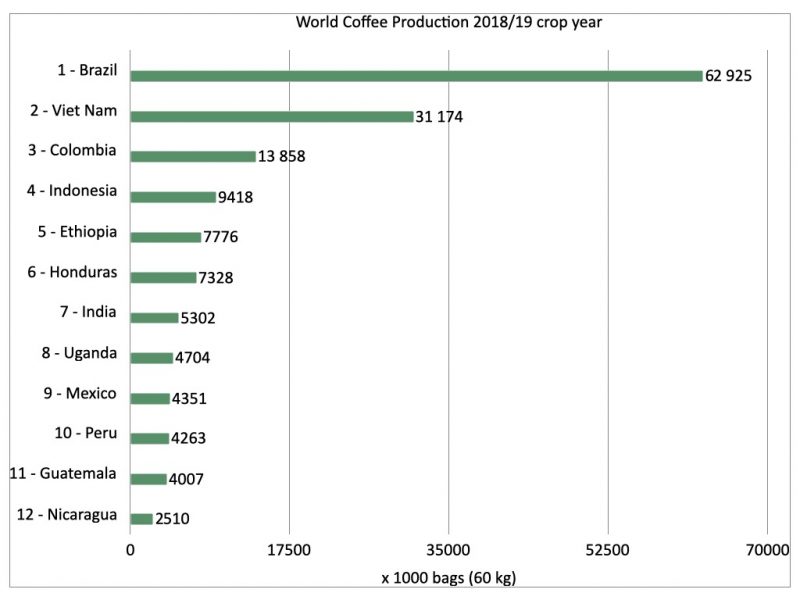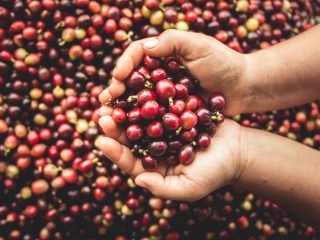Delving into the world of (not only) specialty coffee, at some point a seemingly banal question pops out: “Where does coffee come from?” It is followed by: “What influences its taste?”, “Why does Ethiopia taste different than Brazil?”, “Why do they write about elevation on the packet?”. We’re about to describe various elements of the most important stage of coffee production, i.e. its cultivation on a farm.
The “coffee belt”
The coffee tree is a plant which requires specific growing conditions for proper vegetation. Optimum conditions are usually found in the tropics and vary greatly between continents and even countries and their regions.
The living conditions in the “coffee belt” are characterized by, among others:
- moderate temperatures all year round and no frost
- regular rainfall patterns (dry and wet seasons)
So, we can say that the coffee tree likes a temperate, humid and warm climate, which allows for its growing season to last all year round.
The largest coffee producers in the world include:
However, it is easy to notice that, as far as specialty coffees go, there are also smaller producers in:
- Kenya
- Tanzania
- Rwanda
- Salvador
- Costa Rica
- Panama
- Myanmar
- Bolivia
Due to climate change, the area of the “coffee belt” is slowly shrinking. The increase in average annual temperatures means that in some places it is no longer possible to grow coffee, or at least it is impossible to achieve the original high quality. Global warming is forcing growers to move their crops to higher altitudes or to replace Arabica with Robusta because it tolerates higher temperatures.
Coffee tree species
So far, about 150 species of coffee tree have been discovered, but only two are important in global coffee production and have an approx. 99% share in it. These are, of course, Arabica (coffea arabica) and Robusta (coffea canephora). Their taste differs significantly, which results from different living conditions. Let’s look at them in detail:
| Arabica | Robusta | |
| % of world crops | 60% | 40% |
| tree height | 1,5-3 m | 3-6 m |
| crop elevation | 700-2100 mamsl | 0-800 mamsl |
| resistance to environmental conditions and pests | low | high |
| yield per hectare | low | high |
| body | light / medium | full |
| flavor profile | fruit / flowers / chocolate | earth / cocoa / spices |
| acidity | medium / high | low |
| caffeine content | about 1,5% | about 2,5-3% |
The main factor influencing the differences in the taste of both species is the content of caffeine and chlorogenic acid. They are bitter-tasting substances, produced by the coffee shrub to repel pests.
In Robusta cultivation, the risk of pests is higher than in the case of Arabica, hence it needs to produce more of these compounds. On the other hand, Arabica, growing at higher elevations, produces less caffeine and chlorogenic acid, thus producing less bitterness in the cup.
At the same time, Arabica shrubs can use their energy reserves to produce sugars and lipids as well as aromatic precursors, which leads to a richer, more fruity flavor.
Despite higher costs and more difficult growing conditions, Arabica accounts for the majority of the world’s yield. This is because the consumers prefer its taste. However, due to global warming and growing coffee consumption this trend is shifting in favor of Robusta, which is able to survive in new climatic conditions (mainly at higher temperatures).
To sum up:
- Robusta is more intense, bitter, earthy, with notes of chocolate and spices.
- Arabica is fruity, juicy, more delicate, with higher acidity than Robusta.
Strain, varietal, botanical variety
To make it even more interesting, each species of coffee tree has several dozen, if not several hundred, botanical varieties, otherwise known as varietals. Each varietal brings significant flavor differences into the cup. However, before you can enjoy them as a pour-over coffee or espresso, they must first produce fruit and here comes the question of matching a given varietal to the growing conditions. There is no one-size-fits-all variety that can be grown anywhere in the world. Typically, a few or a dozen specific varietals are used in a given region for the best results. What determines the fact that in a given place one varietal will work and another will not?
Terroir
A term familiar to wine lovers, it has a similar meaning as it comes to coffee. It is a combination of factors that shape the final character of the product. The terroir is affected, among others, by:
- crop elevation
- temperature in the annual and daily cycle
- exposure to UV radiation
- precipitation characteristics
- soil type and biodiversity
- the occurrence of strong winds
- the level of agriculture – the knowledge and skills of the producer
In addition to these elements, the risks associated with the occurrence of pests and diseases (mainly fungi responsible for the occurrence of coffee leaf rust) are also important.

By analyzing all the terroir elements, the producer should select the appropriate varietal for the given growing conditions. Usually, several different varietals are grown in a given place in case one of them is attacked by a new disease or other unforeseen circumstances. This disperses the risk of destroying the entire crop and increases the variety of tastes offered to consumers.
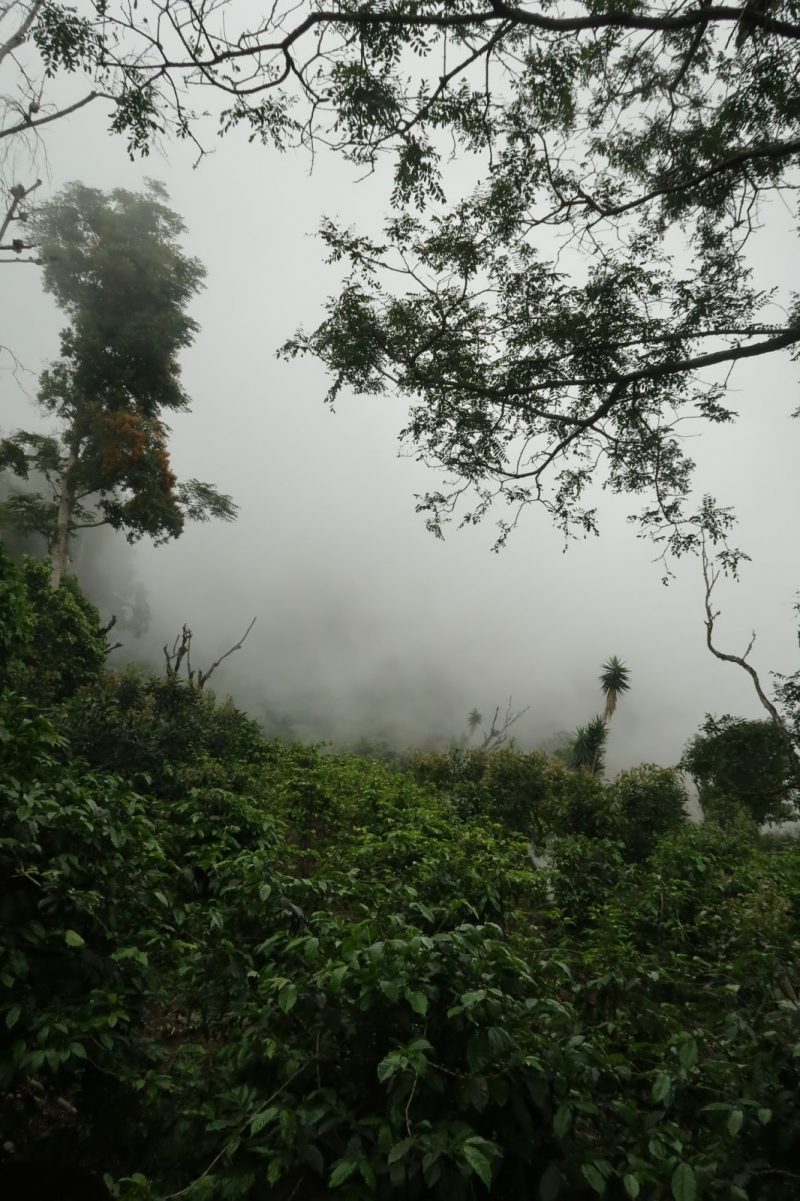
Coffee tree life cycle
Now that we know the basic information about the taxonomy of the coffee tree, we can take a look at the practical side of growing this plant. Where does it start?
Each new tree sprouts from a seed of a fruit (cherry). Growing a seedling requires gentle conditions, which are provided in the so-called “nurseries”. These are places located on plantations or in their vicinity, where the tree grows for about 12 months to a height of about 40 cm and becomes strong enough to be planted in its final location on the farm.
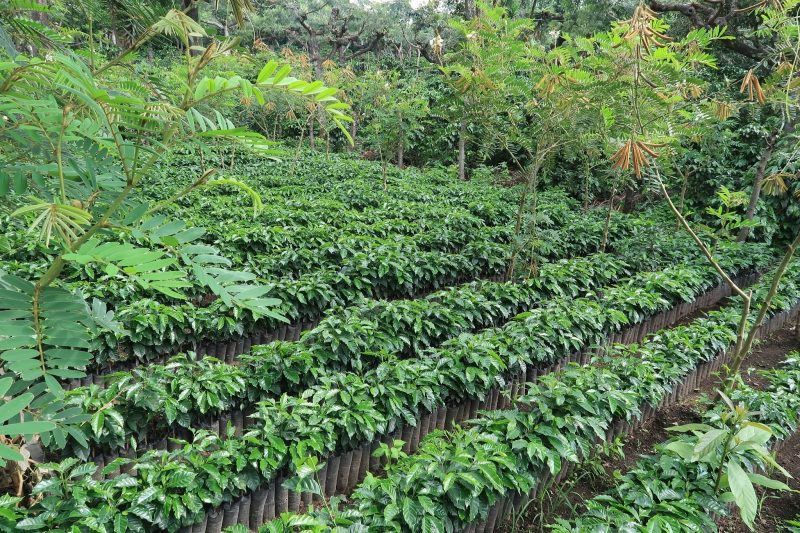
From that moment on, the coffee tree grows for the next 4 years before it bears any fruit. All this time it must be fertilized, looked after and nurtured. Many seedlings will not survive this period and will have to be replaced with new ones and the whole process will then start all over again.
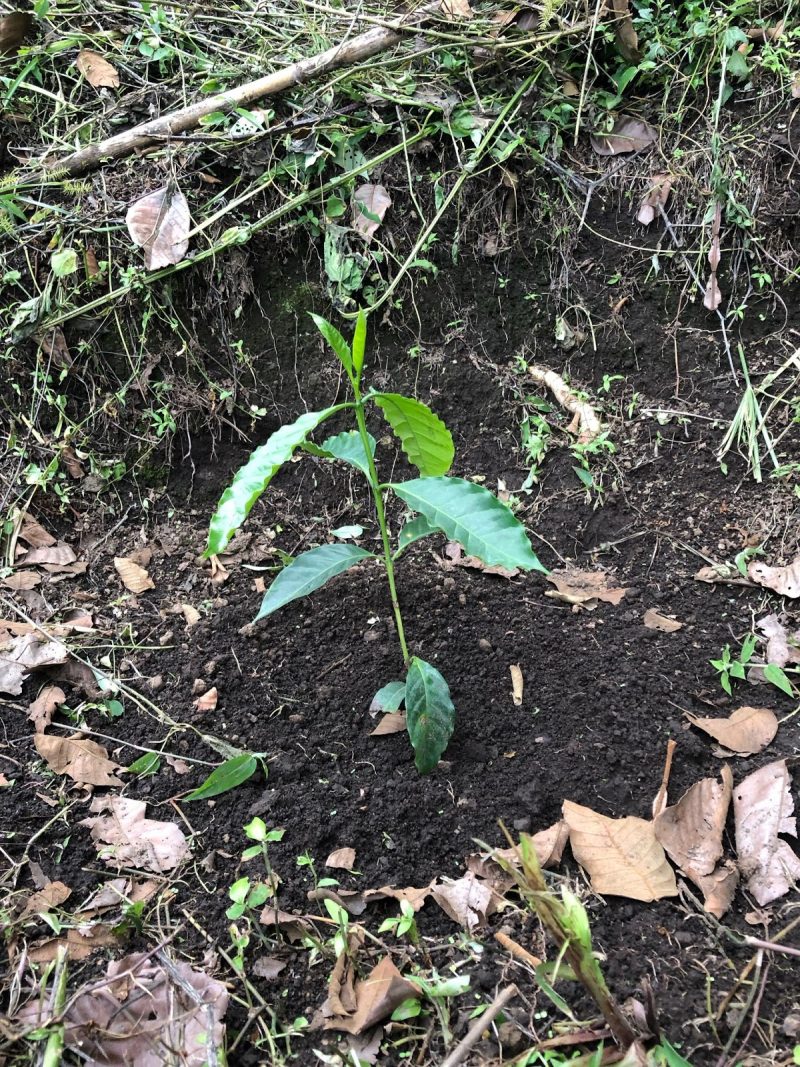
4-5 years after being planted, the tree produces its first fruits. Usually so few that it does not allow for commercial production. However, it is then possible to find out the quality potential of the planted area.
The first commercial yield usually appears about 7 years after planting, and from that moment the trees maintain their full yield capacity even for about 40 years. Then their productivity drops, but they are still able to give yield. There are known cases of excellent-quality harvests from over 60-year-old shrubs.
The life cycle of a shrub may be determined by its age, but much more often it is concluded by a disease (currently rust is the biggest scourge) or a cataclysm (e.g. hail, storm, drought).
From yield to yield, i.e. a year in the life of a coffee tree
When the tree reaches its production stage, the same cycle repeats every year. Depending on the country and the crop elevation, particular moments, such as flowering or harvesting fall in different months.
The first harbinger of the upcoming harvest is flowering. About 6-9 months before the cherry appears, beautiful, delicate and jasmine-scented flowers bloom on the branches. Each of them may become a future fruit. During flowering, the farm gets covered with a carpet of white petals and a delightful aroma that can make your head spin. It is a wonderful sight and one-of-a-kind feeling that can only be experienced on the spot, and only for a short time of the year.
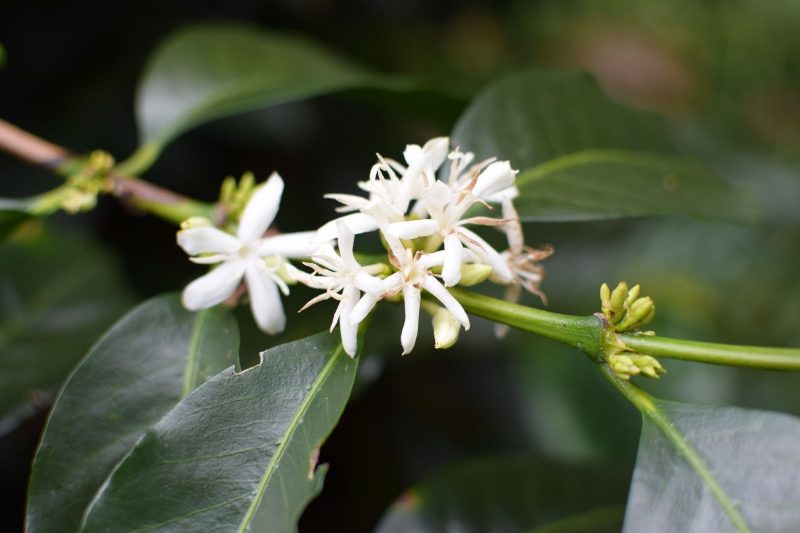
In the following months fruit ripens. The buds that had previously grown flowers turn into single cherries that grow and change their color from green to burgundy, which signifies full maturity. The higher the shrubs grow, the slower and fewer of their fruit ripen. However, this results in the quality – it is no coincidence that the best coffees in the world grow at heights of about 2,000 meters above sea level.
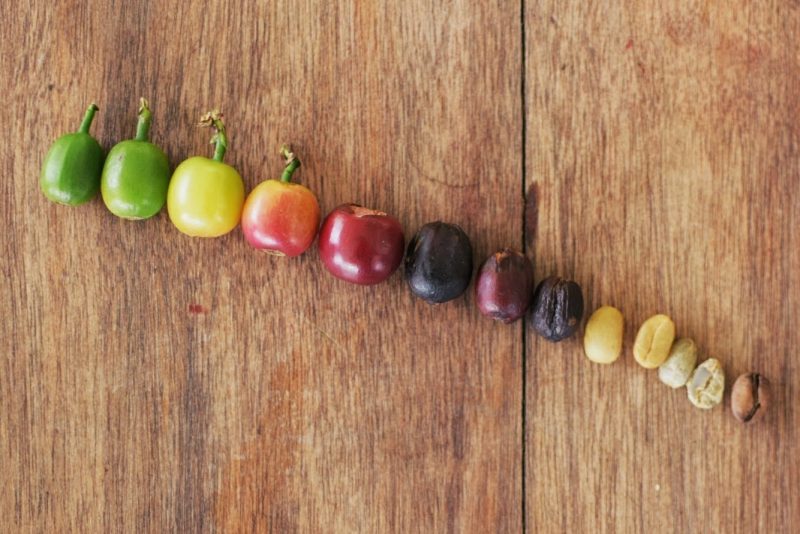
With the advent of the dry season, that is astronomical summer, the harvesting season begins on the farms. This is the most intense moment of the year – several-hour working days are standard because it is crucial to quickly harvest ripe cherries and process them. As the coffee tree bears fruit at an uneven pace, coffee from the same shrubs is harvested 2 or 3 times at intervals of about 10-14 days.
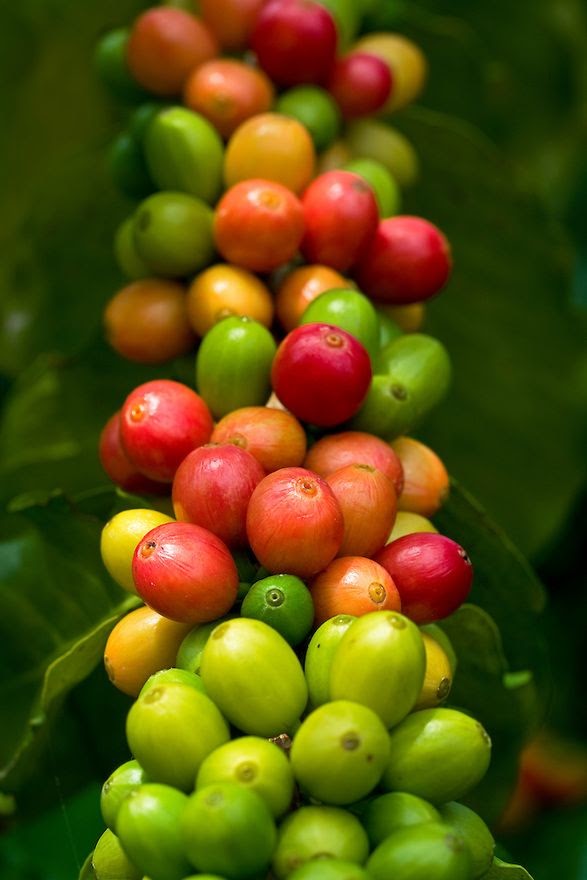
After harvesting, the trees are tired – they may look wilted. They need several weeks to regenerate, with proper fertilization and plenty of light.
Not only the coffee tree
The farm is a complex ecosystem – specialty coffees hardly ever grow in monoculture systems, and the proper growth of shrubs requires shade trees, among others. These are plants with wide-spreading crowns that grow quickly and shade the coffee shrubs. This prevents sunburn and is standard on the best farms. The shade should be about 70% at the time of harvest, and after the harvest, the trees are trimmed to allow more light to the coffee tree and thus allow it to regenerate.
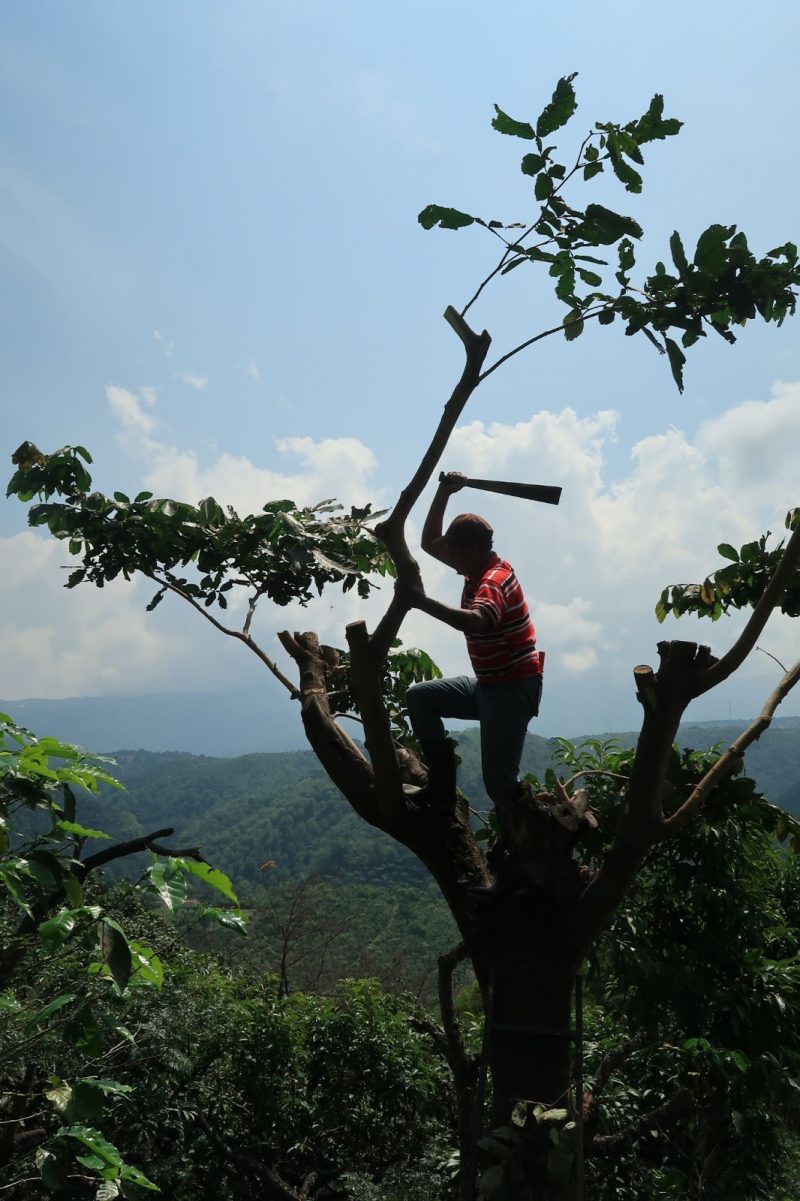
Another all-year-round activity is, among others, weed removal – high soil fertility and favorable climatic conditions are an ideal environment for the rapid development of unwanted plants that compete with the delicate coffee trees for space and food. They grow very quickly and their removal is part of the daily routine on the farm.
These are just a few of the many aspects that need to be taken care of when running a coffee farm that produces specialty-quality beans. What does it look like in the case of the so-called commodity coffee or just plain coffee for the masses?
Quantity> Quality
To understand what a unique product specialty coffee is, it is worth comparing it with what constitutes approx. 95% of the world’s crops, i.e. commodity coffee. Here, the producers are not rewarded for higher quality, because all that matters is that the product they supply meets the minimum requirements necessary to qualify as an export product. So, the only way to increase revenues is higher production.
This is clearly evident in Brazil – the largest coffee producer in the world. Coffee farms with a capacity of 200 ha are considered medium-sized. The area of 400 hectares or 600 hectares is not unusual, and the largest plantations are 2,000 hectares (although it should be noted that the average size of a farm in Brazil is 8 hectares). To compare, the average size of a farm in Colombia is 4.5 ha.
In order to achieve large-scale production and increase the farm yield per hectare, it is necessary to industrialize the entire process, including cultivation and harvesting. This is detrimental to quality, although a lot of progress has been made in this field in recent years and Brazil regularly supplies coffee scoring 76-78 points in any quantity at C-price.
In practice, the farms are located in low-lying, wide and flat areas, without shade trees that hinder the work of harvesters, i.e. mechanized units for collecting cherries. The use of artificial fertilizers and pesticides is necessary, among others, because such farms are monoculture and thus susceptible to pests and soil barrenness.
Environmental factors
Coffee is grown in tropical regions that are particularly valuable in terms of environmental protection, biodiversity and the preservation of the original character of rainforests. Like any agricultural activity, the cultivation of coffee also has an impact on the natural environment. However, the production of specialty coffee contributes to this in only a slight degree, and often requires laborious restoration of the environment to a state as close to pristine as possible, because only under such conditions it is possible to achieve the highest quality. Specialty farms are often located in national parks (eg Elida Estate in Panama, producing one of the most expensive coffee in the world), or wild bird sanctuaries (eg Finca Hartmann in Panama).
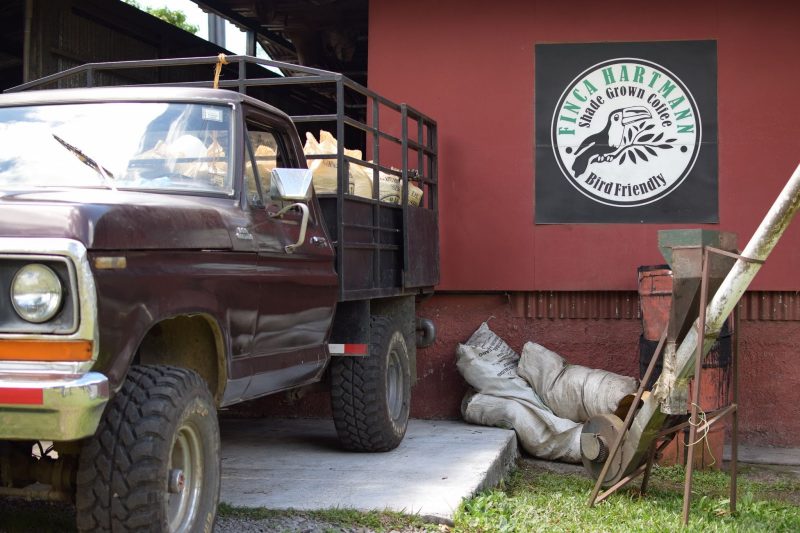
From early dawn to dusk
What is the average working day on a farm like? It starts very early in the morning with the first rays of the sun. During the harvest season, the workers start picking the fruit, which is then transported immediately to the processing station. Regardless of its type, time is a key factor, as uncontrolled fermentation lowers the quality of the final product. All this high up in the mountains, with no cars or machines. The only means of transport is your own legs, and you carry several dozen-kilogram bags from the farm on your back.
With the influx of freshly picked fruit, the coffee mill and patio area become the most burdened part of the production chain. When the fruits pass to the drying stage, the work continues. They need to be stirred regularly, the more often, the better. In certain climatic conditions, the fruits are covered overnight to protect them from moisture and low temperatures and then placed on the patio for drying again each morning. All this time, additional selection of unwanted beans takes place to ensure the highest quality.
In the final stage, the coffee should be properly packed and prepared for transport. 60 kg bags are hand-packed in containers and secured against a several-week journey across the ocean.
When the hectic stage of harvesting and processing is over, there is still a lot of work to do on the farm. Pruning shade trees, fertilizing, removing weeds, planting new shrubs, maintaining infrastructure and processing equipment, as well as quality control and sales are an endless list of tasks for producers and their employees.
The coffee tree is a delicate and demanding plant, which, however, can repay the hard work with wonderful effects in the cup and sustain millions of people around the world.

